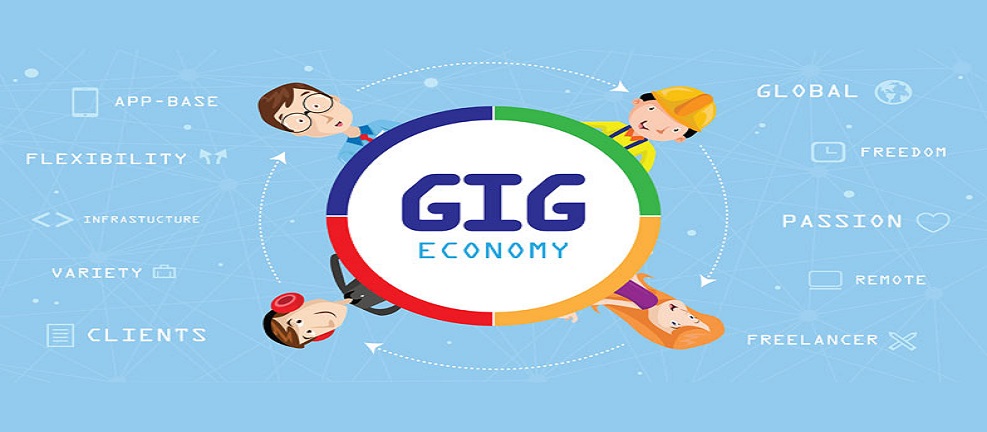As stated in the World Development Report 2019, 3 percent of the global labor workforce—that is, more than 84 million people around the globe are freelancers. Between 0.3 to 0.5 percent of the workforce worldwide partakes in the gig economy.
These numbers were close to zero some twenty years ago. The sharp upward trend in participation in the gig economy over two decades indicates that businesses are shifting their approach from hiring based on location and qualifications to quality and output.
Digital transformation (DT) makes it possible to work from anywhere, at anytime, and deliver value to anyone who asks for it. Also, the business can keep its focus on solving the customers’ problems and move past internal processes without much hassle.
DT changes how people work and get paid along with the very structure of the operation of a business.
Benefits of Digital Transformation
Businesses can hire people with all kinds of skills—from AI/ML experts to graphic designers. The gig economy has opened doors for drivers and artisans as well, giving them exposure to and opportunity in a large market.
In addition to having access to a large and diverse talent pool, businesses that allow employees to work remotely significantly boost their productivity, reduces stress, and reduces costs—both for the company ($5 billion saved in 2018!) and the employee.
A 2015 Stanford study shows how working remote saves the employee’s time, by removing the need to commute, and money, since there is no longer a need to commute or purchase food or clothing separately for work.
The environmental benefits are just the cherry on top.
Effects of DT on How People Are Paid
The gig economy changes the way payments are carried out. Here’s how:
Payments are of two kinds: consumer-to-business and business-to-business (B2B). What separates these two are the fundamental value-volume ratios.
Consumer-to-business transactions are classified as “low-value, high-volume” transactions. On the other hand, business-to-business transactions are classified as “high-value, low-volume” transactions.
However, since workers in the gig economy are businesses-of-one, transactions made to them are a hybrid of both B2B and B2C transactions.
The payments industry has been upended because of the increase in such payments. However, it has quickly adapted to change.
How to Succeed as a Business by Utilizing Digital Transformation?
Approaching a newly built market founded based on cutting-edge tech can be disconcerting—scary even.
In the face of change and extreme competition for the best talent and the most profitability, there’s now a very thin line between success and failure when running a business.
Successful businesses taking advantage of digital transformation in the current market exhibit these key traits:
Trait #1. Focus on the End User
Regardless of what kind of business you’re running, the main focus should be on supplying the users and customers with what they need.
Being pressured into trying and incorporating new tech into your business, only in an attempt to stay in lockstep with your competitors, is downright foolish.
Chasing after newly built technology more often than not creates a lapse between the aim and the result.
The purpose of digital transformation is to make your services available to more customers and to improve their overall experience.
Finding a practical use case for what you’re building, one that is outside the scope of being an academic experiment and sticking to it to solve your customers’ problems, is the right way to go since it keeps the team from deviating.
Trait #2. Building upon Existing Infrastructure
You do not want to be reinventing the wheel.
The only way that the solutions a business offers will see an increase in adoption is by seamlessly fitting into existing technologies, infrastructures, and protocols.
Realizing that both businesses and people do not accept change easily will go a long way to keeping your expectations in check.
Trait #3. Swiftness and Efficiency
Mobile phones have changed the expectations of the consumer. Users now expect an instantaneous response.
There is an increasing need for companies to conduct business in real time and add speed and efficiency to their processes without compromising on quality and security.
The benefits that digital transformation brings have led to widespread adoption of remote working culture. According to Forbes, 66 percent of businesses allow their employees to work remote, and 16 percent operate entirely remotely.
However, spending millions of dollars to go digital may not bear fruit if your staff is not ready—in both capability and capacity—to handle the digital transformation.
Which brings forth an important question...
How do you take care of IT systems in parallel as you make progress on digital transformation?
This is where AIDOOS comes in. We assist subject matter experts from all around the world to connect with your business remotely and get all IT work done.
The “pay as you go” model gives you both control over your output and the flexibility to switch things around whenever needed.
With over a hundred categories of IT work handled, AIDOOS can help businesses build leverage cloud talent and scale growth. This is how we envision scaling digital transformation for both our clients and ourselves!




